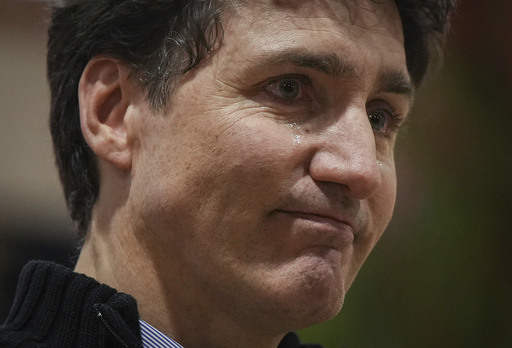
MONTREAL, Quebec — On Wednesday, the Canadian government announced the continuation of a substantial initiative to establish a high-speed rail system connecting Quebec City to Toronto.
This anticipated rail network is set to be entirely electric, covering around 1,000 kilometers (approximately 622 miles) and achieving speeds of up to 300 kilometers per hour (about 187 miles per hour). Key stops will include major cities such as Toronto, Peterborough, Ottawa, Montréal, Laval, Trois-Rivières, and Quebec City.
During a press conference, Prime Minister Justin Trudeau revealed that the government will allocate CDN$3.9 billion (US$2.74 billion) over the next six years, commencing in the 2024-25 fiscal year. This funding will be used to finalize details, such as the precise locations for stations in each city and the overall route of the network prior to the commencement of construction.
Officials have mentioned that it is premature to provide estimates regarding the total cost of the project or its completion timeline.
“A dependable and efficient high-speed rail network will transform transportation for Canadians,” stated Trudeau.
This new rail system, which will brand itself as Alto, promises to shorten travel time between Montréal and Toronto to just three hours. This announcement follows years of discussions and thorough investigations into options to enhance commuter rail service throughout Central Canada.
At present, passenger rail services are constrained by tracks primarily used by freight trains, which limits frequency and often leads to delays. Trudeau highlighted that the proposed high-speed rail network would constitute the largest infrastructure project in Canada’s history.
Trudeau made this announcement amidst uncertainties regarding the Liberal Party’s tenure in power. He previously stated on January 6 that he intends to resign as both party leader and prime minister, with a new leader set to be elected on March 9.
All three opposition parties have expressed intentions to challenge the Liberal minority government, gearing up for a no-confidence vote when Parliament reconvenes on March 24.
Despite potential electoral challenges, Trudeau expressed confidence in the realization of the rail link. “This high-speed rail project in Canada was designed to take enough time to span multiple governments,” he remarked. “It requires the will and commitment of any governing body to drive this progress forward.”
Martin Imbleau, who serves as the president and CEO of Alto, emphasized the necessity for Canada to develop a practical and sustainable alternative to reliance on cars and planes.
“A high-speed rail network is not merely an indulgence; it is an essential service,” Imbleau asserted. “Highways are increasingly congested, airports are at capacity with too many travelers, and intercity travel remains frustrating, inconsistent, and lacking sustainability.”
The Canadian government has formed a partnership with Cadence, a consortium of firms, to co-design, construct, finance, operate, and maintain this ambitious rail mega-project.

